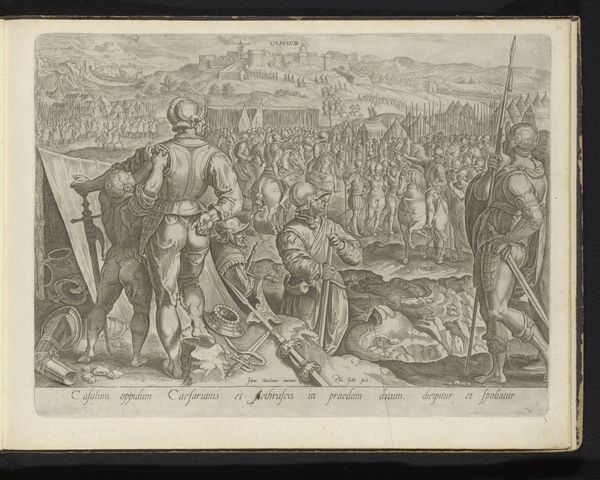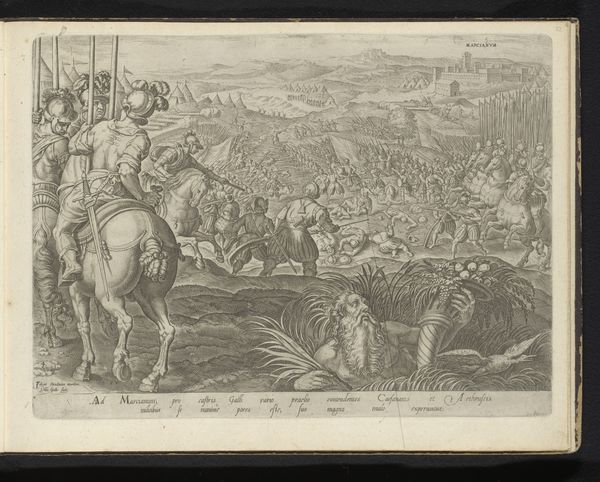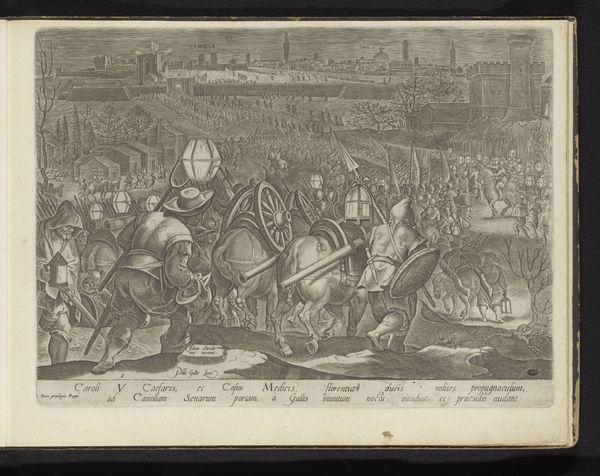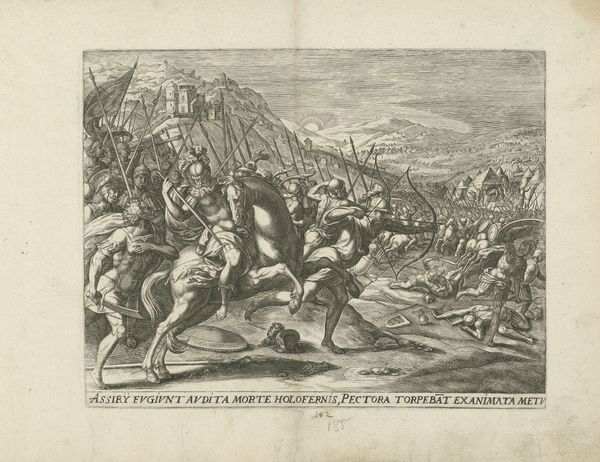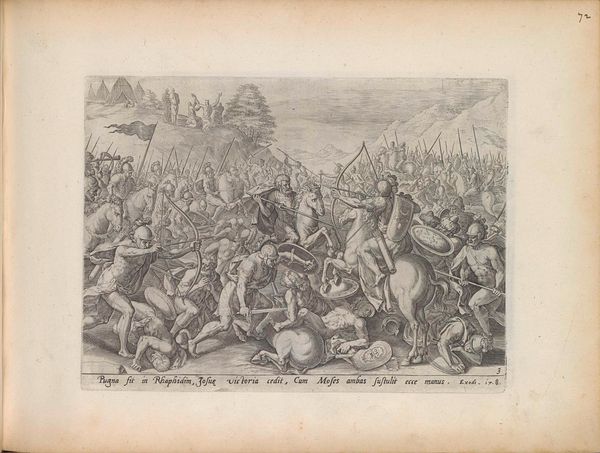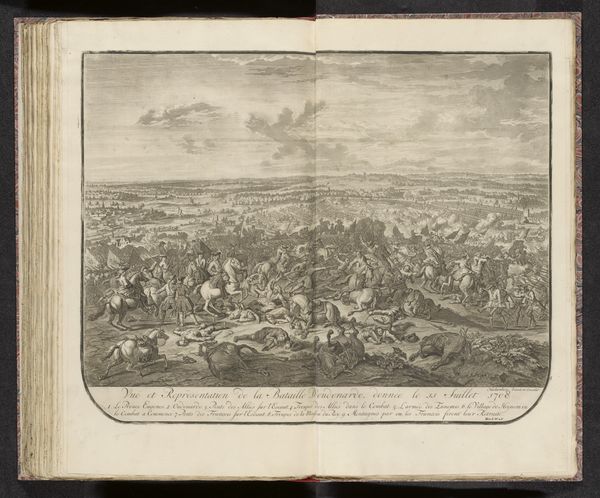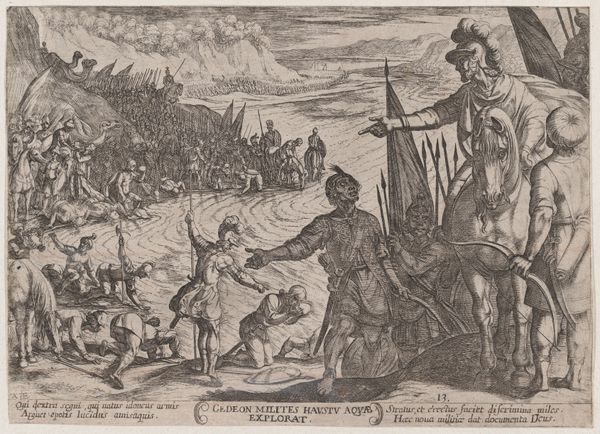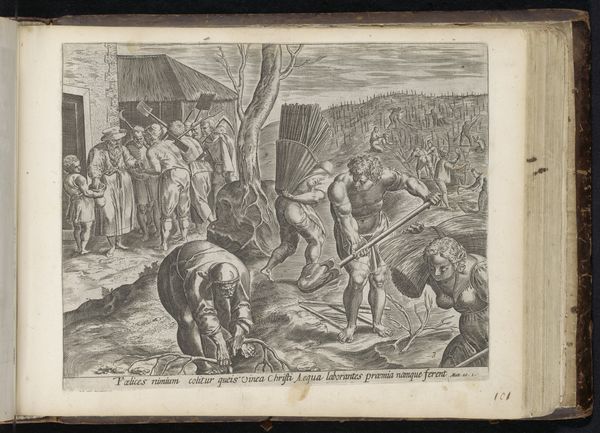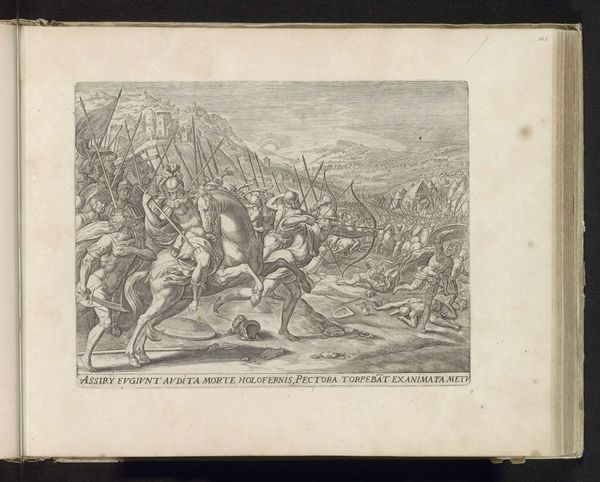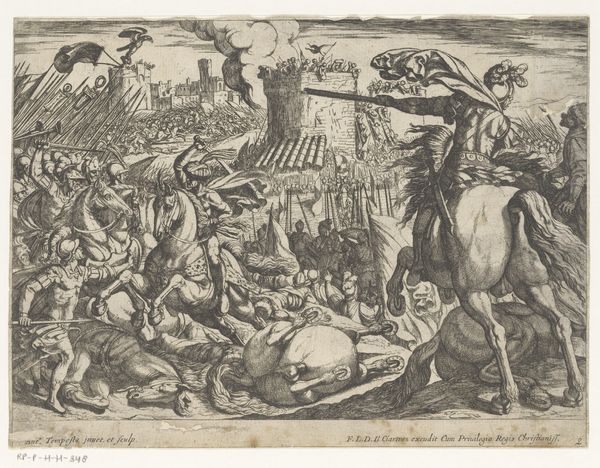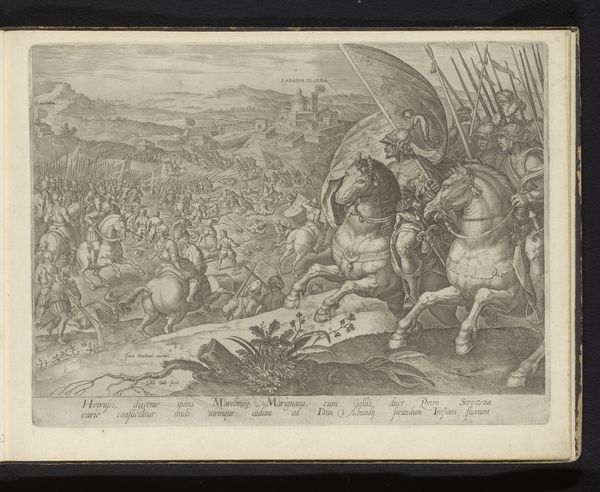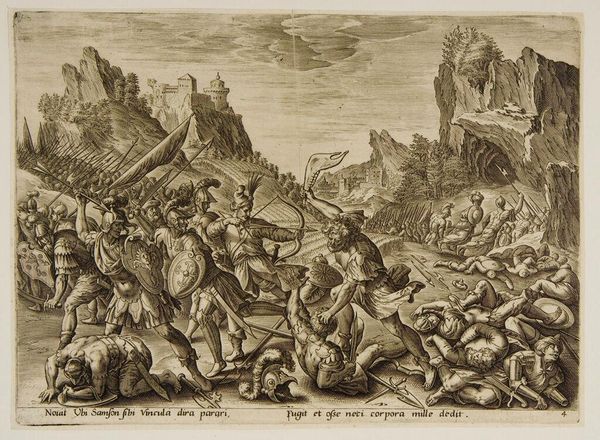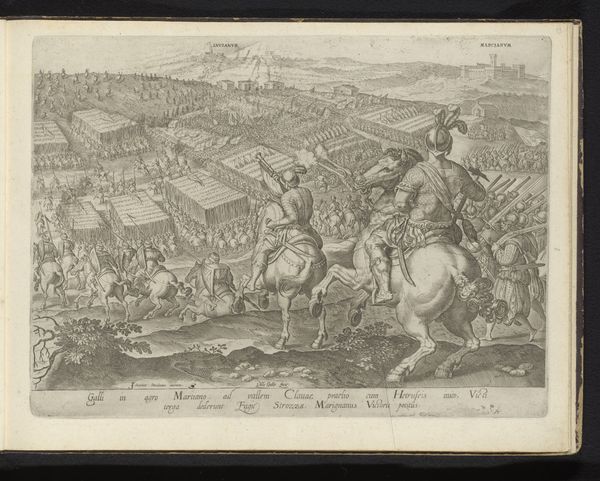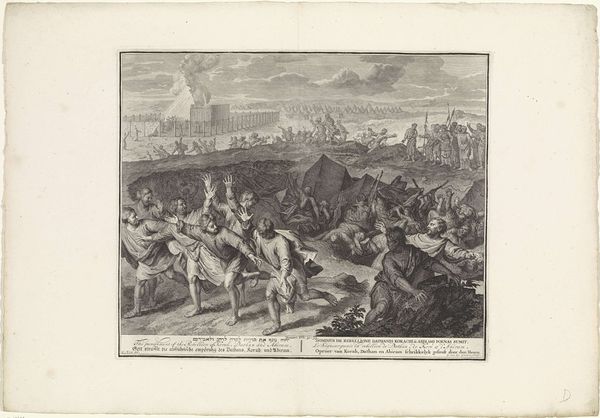
print, etching, engraving
# print
#
etching
#
landscape
#
11_renaissance
#
history-painting
#
engraving
Dimensions: height 219 mm, width 299 mm
Copyright: Rijks Museum: Open Domain
Curator: Look at this wonderfully detailed print titled "Nederlaag van de Turken bij Piombino," or "Defeat of the Turks at Piombino," created around 1583 by Philips Galle. It’s currently held in the Rijksmuseum. Editor: It’s chaotic, but controlled. My first impression is one of strategic positioning—the landscape, the placement of figures. It feels like an exercise in power. The foreground especially, has a high density of figures struggling in defeat. Curator: Indeed, Galle likely worked as an engraver and publisher, relying on commissions or a print market hungry for news and patriotic imagery. Etching and engraving were, in a sense, the mass media of the late 16th century. Consider the layers of labor here, from the artist to the workshop assistants, to the distribution networks that circulated this image. Editor: Focusing on the "Defeat of the Turks," we see more than just a battle. Consider the use of the archer in the center foreground; an almost mythic figure amidst the carnage. Galle used the figure of an archer as an imposing symbol of resistance, and I see subtle gestures of cruelty everywhere in this landscape of suffering. Look at how even the figures in boats appear distressed by this event. Curator: From a material perspective, Galle is translating a complex historical event into a series of reproducible lines and tonal gradations. Think about the economics of production too, with workshops managing various stages of creation and printing. There is an almost assembly line aspect to the proliferation of these prints, intended for relatively wide circulation among people. Editor: But the choice of details - the city in the background, the crowded ships, the very visible struggles between groups of people locked in desperate combat – surely those were not arbitrary? Consider the role this image played in solidifying identity and instilling perhaps fear, or even a thirst for vengeance, related to foreign forces for early audiences. Curator: Exactly, by examining the material conditions of its production and consumption, we gain insights into the visual culture of the time. The level of etching detail, along with the number of copies made, shaped collective understandings. Editor: It makes you consider how even a small print can carry such heavy symbols and meanings across the centuries. Curator: And to reflect on the very human endeavors behind them. Thanks to both technique and design, it becomes clear just how relevant works like these can be even now.
Comments
No comments
Be the first to comment and join the conversation on the ultimate creative platform.
